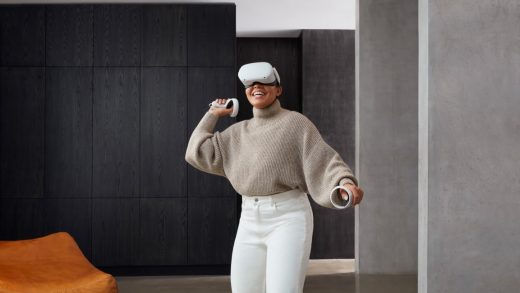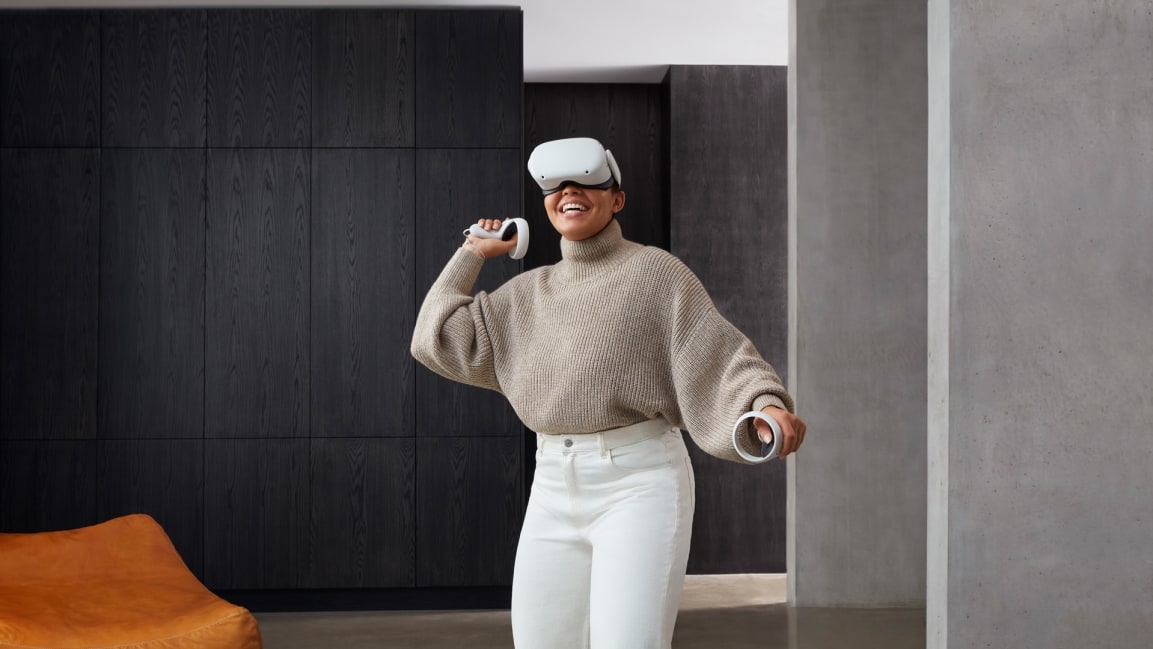Oculus’s new headset is the first real VR rival for Xbox and PlayStation
For the first few years of consumer VR, most hardware on the market was either high-end and tethered to a powerful gaming-quality PC by awkward wires and cables, or low-end and connected to an Android phone. But with its bulky “Santa Cruz” prototype, Facebook-owned Oculus showed in 2016 it was possible to integrate all the necessary computing directly into a headset.
Flash forward to the spring of 2018, when Oculus launched the Oculus Go, the world’s first production stand-alone consumer VR headset. Not nearly as powerful as its flagship Rift, the Go nonetheless ushered in a new era for VR, allowing people to use it whether or not they had a high-quality PC or an Android phone. In other words, hello, Apple fans! And a few months later, Oculus upped the ante with the release of the Oculus Quest, a more powerful stand-alone headset featuring positional and hand tracking, both key features of high-quality VR.
Despite substantial early hype and growth expectations, the consumer VR industry had struggled to take off due to the onerous hardware requirements and middling roster of content. But the Quest has proved that the market was maturing, especially after the pandemic hit: The headset has been sold out for months as people looked for novel things to do while quarantining.
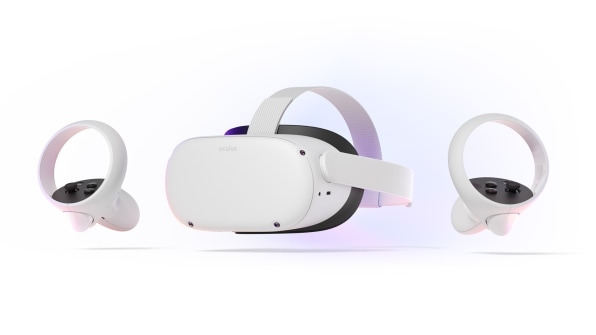
Now, with the launch of the Quest 2, Oculus has raised the bar once again. Essentially a lighter, slightly more powerful, and—crucially—cheaper update to the original Quest, it’s a VR headset ready for the masses. There’s now ample reason someone looking to spend a few hundred dollars on entertainment hardware should strongly consider VR over a Sony PlayStation or Microsoft Xbox.
Oculus is announcing the Quest 2 at the Facebook Connect conference today, which is being streamed live to anyone. You can watch the stream here.
The Quest 2, which goes on sale today in 22 countries, will be available October 13. It comes in two models—a 64 GB version for $299 or a 256 GB version for $399. On cost alone, that’s a meaningful improvement from the original Quest’s pricing of $399 for 64 GB and $499 for 128 GB.
The new headset, which can run all existing Quest titles and offers all the previous version’s technology features, is smaller and 10% lighter than its predecessor, yet has 50% more pixels, more RAM, and faster processing via Qualcomm’s Snapdragon XR2 chipset. It also features redesigned Touch controllers meant to offer better ergonomics.
Even better—for those who want to get their hands on a Quest 2—Oculus says you’ll probably actually be able to buy one. “We are hoping to meet everybody’s demand,” product marketing manager Claire Binder says. “We won’t know how it will land in the market until we get there, but we’ve scaled up production.”
Fun and easy to set up
If you ever owned an Oculus Rift or HTC Vive, you may suffer from a little setup-induced PTSD. Although those pioneering VR headsets were powerful—even more than the Quest 2—they were a serious pain to get up and running. As noted above, they had to be tethered to a PC via several cables, and positional tracking was only possible via wired sensors that had be placed on the edge of your play area. And all of that is to say nothing of software updates that had to be installed on both the PC and the headset itself with maddening regularity.
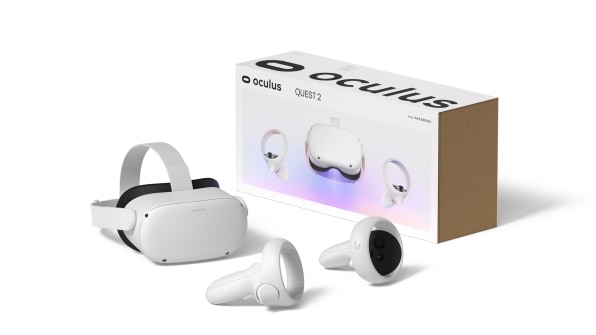
By comparison, it’s possible to be happily using the Quest 2 within about five minutes of taking it out of the box. Although it does require a quick initial configuration—using a Facebook account—via the Oculus mobile app on either an iOS or Android phone, once that’s done, you’re good to go with no external hardware required.
One of the important elements of setup is defining what’s called the Guardian zone, the boundary of the physical space in which you can safely walk around wearing the headset. To do so takes just seconds: You are able to see the physical world in front of you thanks to technology Oculus calls Passthrough Plus, and simply draw a line around the edge of the space with the Touch controller. Then, whenever you use the Quest 2, if you approach the edge of your safe space, a digital wall appears, alerting you to be careful. The Passthrough Plus technology also converts to a view of your physical space if you walk through your Guardian wall. Together, the two features allow you to feel comfortable walking around with the headset on.
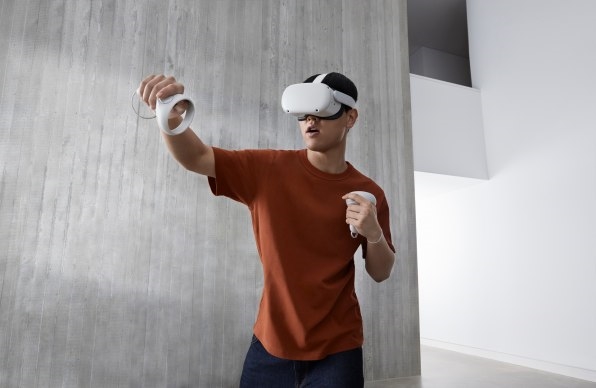
The Quest 2 should be comfortable to wear for most people, and while there’s a small learning curve to adjusting the straps, it’s pretty easy to give the headset to someone else and fit it to their head. Most games and other types of experiences recommend wearing headphones, but the onboard audio is pretty good, as well as being positional, meaning that sound comes from the direction of whatever action is happening in the world in which you’re playing.
Games galore
While VR holds the promise to transform everything from productivity to exercise, Oculus is aiming the Quest 2 largely at the gaming market. “That’s where the great experiences are today,” Binder says, while adding that there’s also a range of available social, fitness, and productivity tools.
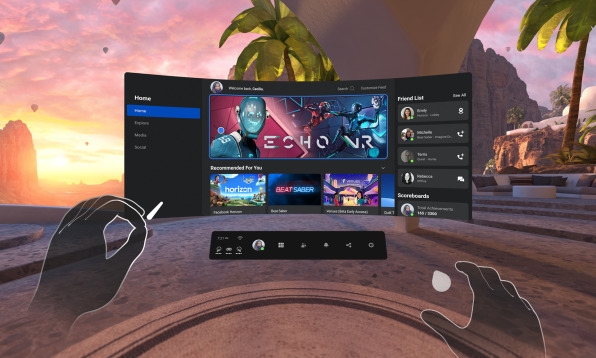
And to be sure, while I initially used the Quest 2 to attend an all-digital version of Burning Man, the bulk of what’s out there for the device is games. Existing hits such as Beat Saber and Racket: Nx are a lot of fun, taking terrific advantage of the Quest 2’s processing power, positional audio, and tracking. And Oculus makes multiplayer gaming easy, as well. Racket: Nx’s developers smartly integrated the ability to compete head-to-head, taking advantage of the Quest 2’s lack of lag, its social audio tools, and the network of Oculus users. And the more people that buy the headset, the more users will enjoy playing with their friends.
While all existing Quest content will run on the Quest 2, Binder acknowledges that the new device’s faster performance makes it possible that future titles may not run on the original Quest. But several new titles coming out this holiday season, including from the Star Wars, Jurassic World, and Myst universes, will all run on either device. All told, there will be more than 200 titles available at launch, including hits such as Echo VR, Dance Central VR, and Arizona Sunshine.
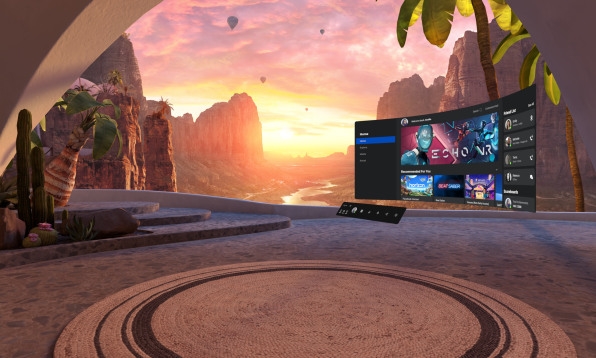
Unfortunately, there are some high-end VR experiences that won’t run on the Quest 2. My favorite is the beautiful time sink Google Earth VR, which requires a more powerful system like the Oculus Rift S or HTC’s Vive. Fortunately, Oculus offers a workaround—the $75 Link, a cable that tethers the Quest 2 to a gaming-quality PC and lets the stand-alone headset run Rift titles. But it’s unclear how many people will bother to go that route.
When Facebook acquired Oculus in 2014, it envisioned a time when massive numbers of people would use VR to socialize. Indeed, the company has talked for some time about the idea of bringing a billion people into VR, something Binder reiterated during a recent press briefing. But notwithstanding Facebook’s well-demonstrated ability to build billion-user communities, the growing popularity of the Quest, and the likelihood that the Quest 2 will bring many newcomers into VR, that vision is still surely quite a ways off.
Still, in order for there to be anywhere close to a billion VR users, it’s going to take good hardware, a broad library of compelling content, and the promise of continued forward progress. With the Quest 2, Oculus is offering all of the above. Things have never looked brighter for consumer VR.
(53)

